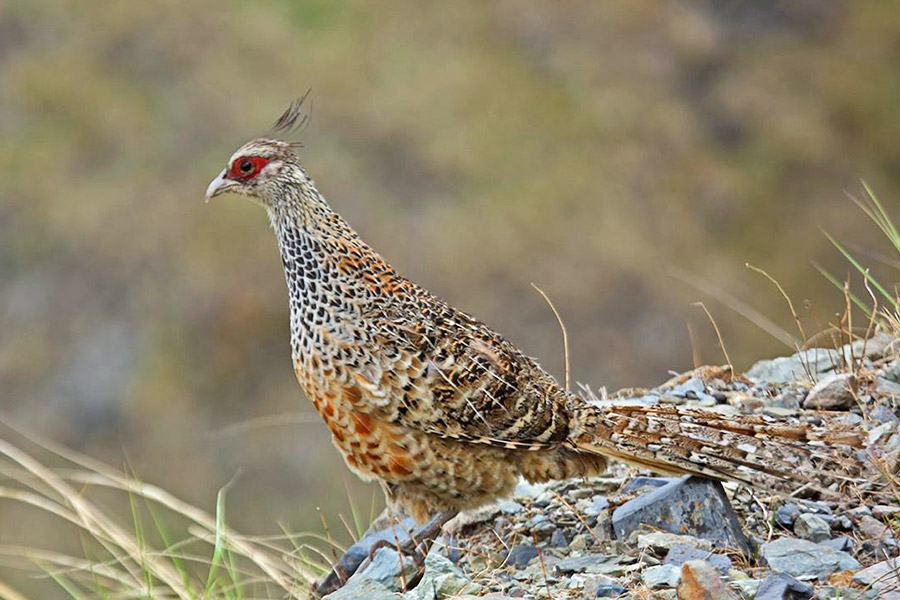A version of this article appeared as “Bird Paradise” in the April 2015 edition of National Geographic Traveller magazine.
The Himalayan Quail was last reported in 1876 in the vicinity of Nainital, and there are many zealous ornithologists who nurse the hope that the quail may still lurk somewhere in these environs; like the forest owlet, believed to be extinct, but rediscovered in 1997 after 113 years in Melghat Tiger Reserve.
Hope got another chance, with the forests in Nainital being protected as a Conservation Reserve. The Nainadevi Himalayan Bird Conservation Reserve (as a tribute to the local deity, Nainadevi) was notified on 9th March 2015, by the Government of Uttarakhand. The reserve encompasses an area of 111.9 sq km in the Nainital district of Kumaon. Comprising the Kosi and Naina forest ranges, and covering the hamlets of Kilbury, Vinayak, Kunjakharak, Panghot and Gangikharak, this landscape is renowned for its rich bird life.
This visionary decision of the state government to declare this conservation reserve rests on the ecological significance of the region. The extinct Himalayan Quail aside, the reserve hosts a wide diversity of avifauna, including a number of pheasant species. Notable among these is the Cheer Pheasant, which is the flagship species of this habitat. Other birds include the Hill Partridge, Chukar Partridge, Koklass Pheasant, Khalij Pheasant, Rufous Sibia, Red-billed Leiothrix, Black-chinned Babbler, Chestnut-bellied Nuthatch, Black-throated Tit, Rock Bunting, Green-tailed Sunbird, and Yellow-breasted Greenfinch. Endangered raptors such as Bearded Vultures and Himalayan Griffons can also be seen here. Other than birds, a number of mammals, such as barking deer, sambar deer, yellow-throated marten, Himalayan goral, serow and leopard have been recorded in the area. Nainadevi is part of the Corbett landscape, and tigers have been recorded here as well.
The region is also rich in flora with five species of oak and healthy presence of rhododendron.
Besides protection, the big idea that motivated the notification of the reserve was that it will bring in tourists interested in nature and bird-watching, and thus benefit locals. At the same time, it is hoped this will help curb the rapidly growing resorts and other infrastructure which is detrimental to the fragile ecology of the area, and is harming the forest on which the local communities are dependent. Forest authorities led by DFO Nainital, Tejaswani Patil Dhakate, held various consultative meetings with the villagers and explained to them about the proposal to declare the area as a conservation reserve. I was part of the survey that recommended the reserve, and also attended some of these meetings. I was heartened to note the support of the local villagers.
Paramjit Singh, Chief Conservator of Forests, Kumaon, who played a key role in initiating this effort said that, “Notifying Nainadevi will not only help in conservation of the rich biodiversity of the area, particularly its avifauna, but will also benefit the local communities through eco-tourism and other employment opportunities in the reserve.” Adds Chief Wildlife Warden Digvijay Singh Khatti, “with the notification of this reserve, there is scope for better protection and conservation strategy for this region. We hope to renew efforts and surveys to try and locate the Himalayan Quail.”
Personally, I have been visiting it this area for over a decade, and the fact that it will now be protected for posterity gives me a great sense of satisfaction. The area is good to visit the year around. Do not crowd the birds for photography…and well, don’t even leave your footprint! Get in touch with the DFO Nainital for stay in the Forest Rest Houses in the reserve, and there are a few resorts in Panghot. I recommend Jungle Lore. Eat Maggi at the local dhabha in the tiny Panghot village, it’s delicious and supports the local entrepreneurs!


 CI is a non-profit, non-commercial portal that aims to facilitate wildlife and nature conservation by providing reliable information and the tools needed to campaign effectively.
CI is a non-profit, non-commercial portal that aims to facilitate wildlife and nature conservation by providing reliable information and the tools needed to campaign effectively.